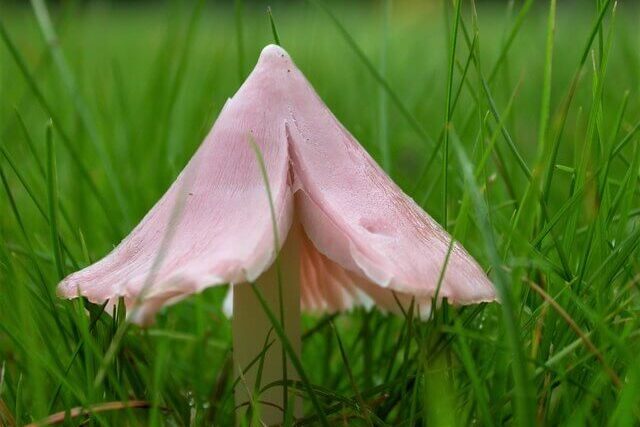
The Yorkshire Dales and North York Moors national parks have been identified as home to some of the UK’s rarest mushrooms, according to a new survey by the conservation charity Plantlife.
Plantlife’s annual fungi survey uncovered hundreds of new sites for two rare species – the pink waxcap and the violet coral – with North Yorkshire emerging as a significant “hotspot”, the charity said.
A spokesperson for Plantlife said the project had made “multiple new discoveries” of the species across a range of habitats, including cemeteries, gardens and farmland within the two national parks.
Both the pink waxcap and the violet coral are classified as “vulnerable” on the International Union for Conservation of Nature’s Red List of threatened species.
Dr Aileen Baird, Plantlife’s senior conservation officer for fungi, said the findings had exceeded expectations and represented “a major leap in knowledge”.
The latest data identified 18 new UK locations for the violet coral, a striking species known for its vivid violet, branching structure. Researchers also recorded 300 new sites nationwide for the pink waxcap, sometimes called the ballerina waxcap for its delicate, flared cap resembling a pirouetting dancer.
While Plantlife has not disclosed the precise North Yorkshire locations to protect the sensitive habitats, it said violet coral typically thrives in “unimproved grassland”, while pink waxcap is more common in the west of Britain – especially in Wales, where it favours sheep-grazed acidic grassland.
Dr Baird said: “These results reflect both the incredible enthusiasm for fungi and the power of citizen science.
“With more people than ever taking part in Waxcap Watch, we’re gathering the essential data needed to protect these extraordinary species.”
The charity said a record 567 surveys were completed in 2024.
Clare Blencowe, from the British Mycological Society, described the discoveries as “really impressive”, highlighting how much there is still to learn about Britain’s fungi.
Clare Blencowe, from the British Mycological Society, said the discoveries of so many new sites for both fungi were “really impressive”.
“These fungi are vital indicators of the health of our grasslands and highlight the biodiversity that exists around us in our towns, as well as our countryside,” she said.
——————————————————————————
At Natural World Fund, we are passionate about restoring habitats in the UK to halt the decline in our wildlife.

